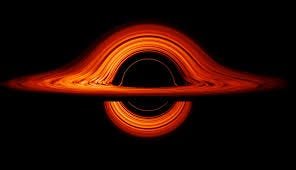When I was leaving university I decided to take a year. I got a tattoo of a snake eating its tail. A reminder that all endings circle back to beginnings. In my year I would read and write. I would be with my friends, and apply for prospects that were even less real than my year because they would start a year after that. In September I looked at the snake and could only see it choking. I felt like I was killing time, and time was killing me. I did what I had been trained to do and looked for answers in libraries. Among other things, I reread The Sense of an Ending by Frank Kermode. I read it before I went to sleep. I read it at a race’s starting line. I read it on the train home for Christmas. Kermode says that ‘self’ is the story we tell ourselves to cross the void between ‘tick’ and ‘tock.’ Life, like a plot, is a line charged with significance because of the certainty that it will end. I wanted to believe that I was more than the stories I told myself. And I was too early in my year to feel defined by its ending. I gave up on narrative time and chose to see the snake as a circle, not a line. For a while I took to time as trees do, laying my year down in an expanding outer ring. This way (I thought) I could carry time, and count it. I could hold the past in tight circles within me and face down the future with a shield of bark. Then I read that when trees are struck by high winds, their yearly marks blend and distort. I could feel high winds around me in February. I was trying to order time, but time had ordered me. I began to have dreams full of snakes. A circle is a more complicated thing than a line. St Augustine called God a circle whose centre was everywhere and whose circumference was nowhere. I hoped my crisis of time was just a crisis of faith because learning how to pray sounded easy. One religion said that things can change in six days. Another didn’t even have a God, just presentness. I decided that a religious conversion might be a waste of time. My friend and I flew to Morocco to climb a mountain. Thou shalt stretch time by travelling to new places. Thou shalt stretch time by being in pain. At the summit I saw time pause in the space between the last day and the next one. Lines and circles became a mountain range. The Aymara of the Andes are the only known people who imagine time flowing from the past in front to the future behind. I felt the future whispering. I gave up telling time and let it tell me. On the longest day of this year, a year after I chose to take a year, I listened to a quantum scientist talk about entropy. He said that time is heat: all that distinguishes the future from the past are these marks of heat that memory can see. I count all the poems that have slowly warmed into me and I watch my friend move out. A black hole is circle and line in one. Light rays converge and the surface of time flexes inwards. To go back out the way you came you would have to move towards the present. But movement is heat. On the other side of a black hole is a space-time world untouched by heat. In this dimension the past is a jazz singer, and clocks lie, and the granularity of time is as long as roundabouts, and when everyone tries to imagine their dimensions together it could be called God, but it'll just be called Cambridge.
Ouroboros: From Ancient Greek οὐροβόρος, a compound of οὐρά (“tail”) and -bóros, (“devouring”)
Assmann, Ouroboros: The Circle as a Concept of Infinity (2019)
Baudrillard, The Illusion of the End (1992)
Emerson, Circles (1941) - Augustine reference
Kermode, The Sense of an Ending (1967)
Rovelli, The Order of Time (2017)




